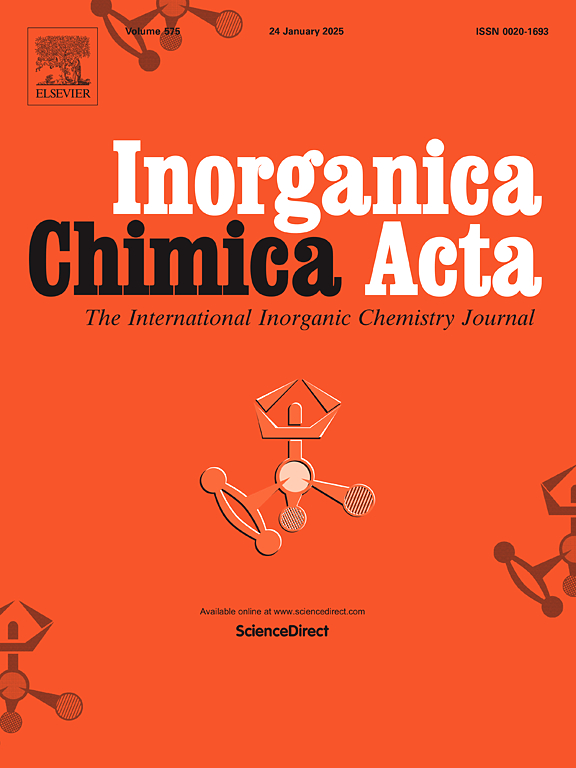Binuclear Fe(II) and Cu(II) complexes with 2-(pyridin-2-yl)-1H-benzimidazole and 4,4′-bipyridine: Synthesis, characterization, DFT insights, broad-spectrum bioactivity and docking study
IF 2.7
3区 化学
Q2 CHEMISTRY, INORGANIC & NUCLEAR
引用次数: 0
Abstract
This study presents the synthesis, structural characterization, theoretical analysis, and biological assessment of two novel binuclear complexes: FeBBNZBIPY and CuBBNZBIPY. These complexes were synthesized from 2-(pyridin-2-yl)-1H-benzimidazole (BBNZ) and 4,4′-bipyridine (BIPY). FT-IR analysis confirmed the bidentate coordination mode of BBNZ and BIPY, while molar conductivity measurements indicated the non-electrolytic nature of both complexes. Structural determination identified FeBBNZBIPY as [Fe2 (BBNZ)2(BIPY)(Cl)6] and CuBBNZBIPY as [Cu2(BBNZ)2(BIPY)(Cl)4(H2O)2], both displaying octahedral geometries as verified by spectroscopic analysis. Density functional theory (DFT) calculations provided insights into their electronic properties. Biological assays revealed enhanced anti-inflammatory, antifungal, antibacterial, and antioxidant activities, with CuBBNZBIPY demonstrating superior anti-inflammatory and antioxidant efficacy, showing IC50 values of 90.13 and 72.61 µM, respectively. Molecular docking studies further highlighted specific protein interactions, with CuBBNZBIPY exhibiting high binding energies of −8.71, −8.79, −8.92, and −8.92 kcal/mol against targets 5iq9, 6CLV, 5IJT, and 5IKT, respectively, underscoring the therapeutic potential of these complexes across various biomedical applications.

求助全文
约1分钟内获得全文
求助全文
来源期刊

Inorganica Chimica Acta
化学-无机化学与核化学
CiteScore
6.00
自引率
3.60%
发文量
440
审稿时长
35 days
期刊介绍:
Inorganica Chimica Acta is an established international forum for all aspects of advanced Inorganic Chemistry. Original papers of high scientific level and interest are published in the form of Articles and Reviews.
Topics covered include:
• chemistry of the main group elements and the d- and f-block metals, including the synthesis, characterization and reactivity of coordination, organometallic, biomimetic, supramolecular coordination compounds, including associated computational studies;
• synthesis, physico-chemical properties, applications of molecule-based nano-scaled clusters and nanomaterials designed using the principles of coordination chemistry, as well as coordination polymers (CPs), metal-organic frameworks (MOFs), metal-organic polyhedra (MPOs);
• reaction mechanisms and physico-chemical investigations computational studies of metalloenzymes and their models;
• applications of inorganic compounds, metallodrugs and molecule-based materials.
Papers composed primarily of structural reports will typically not be considered for publication.
 求助内容:
求助内容: 应助结果提醒方式:
应助结果提醒方式:


